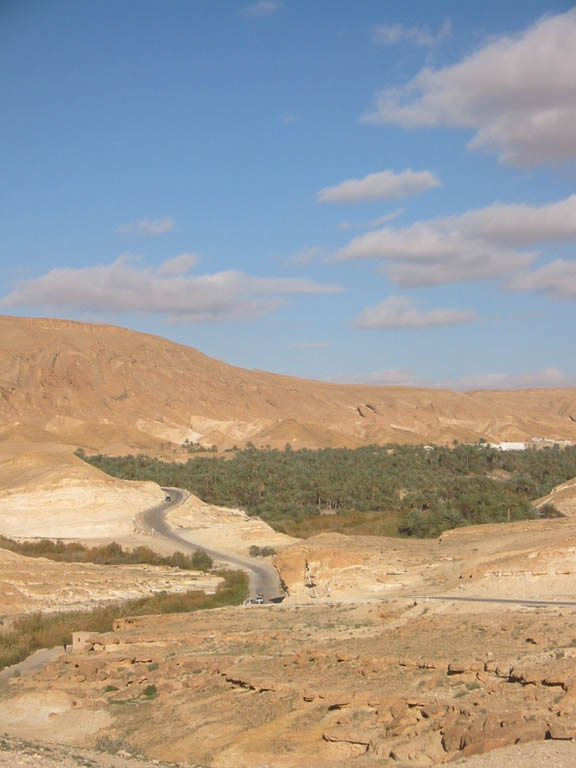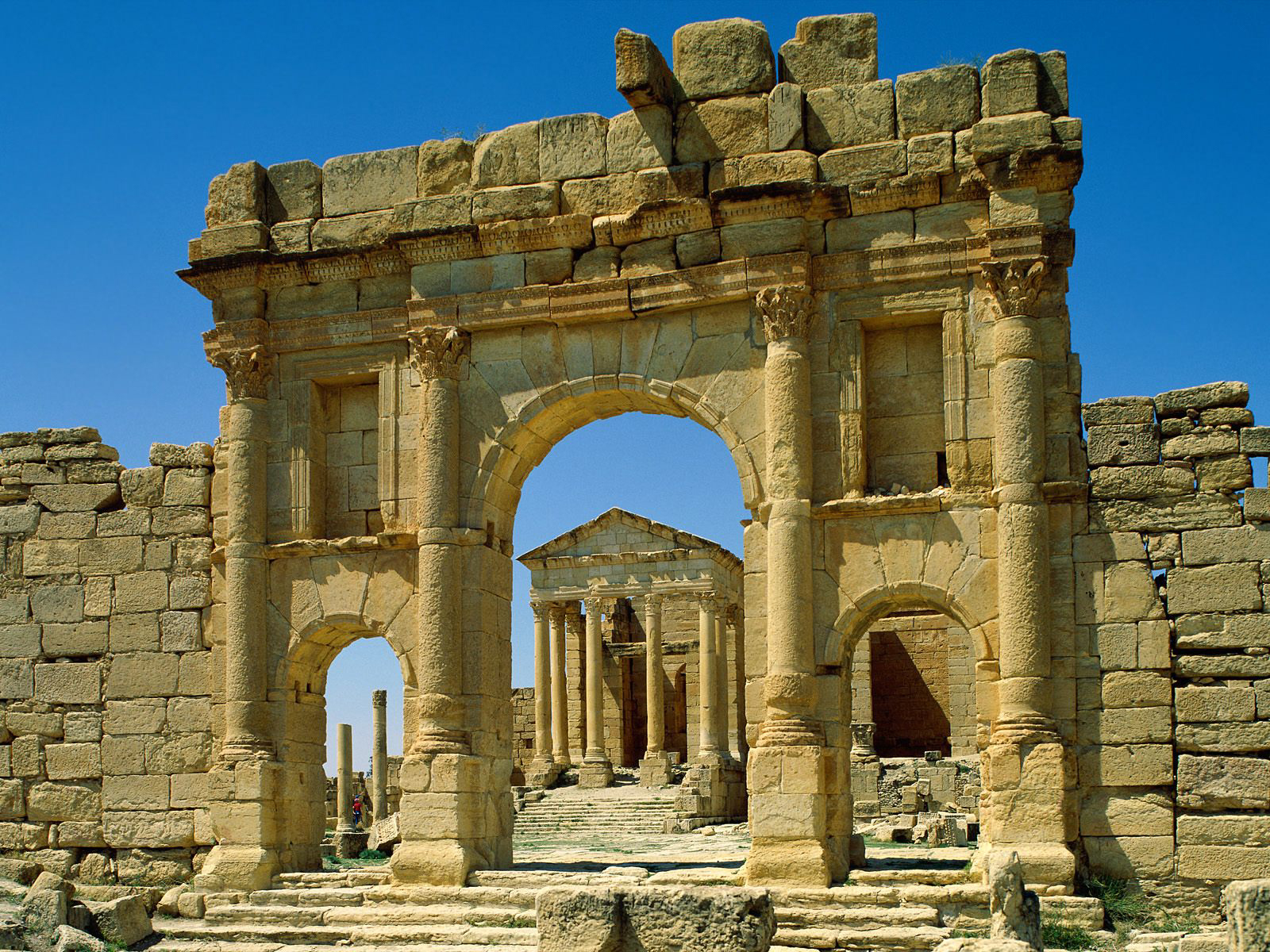This is an authentic troglodyte village, where the local Berber population lived for centuries in underground homes to protect them from summer’s heat.
One of these fabulous Berber villages with its pitted lunar landscapes was the set of the Spielberg’s movie Raiders of the Lost Arc and Lucas “Star Wars”.
Tataouine
One of the most southern cities of Tunisia, Tataouine lies at the center of a spectacular collection of Ksars. Ksars are groups of small arched Berber storehouses called “ghorfas”, built of stone and dried mud, on the top of almost inaccessible mountains. Other local small villages worth seeing include Chenini, Douirat and Guermassa.


Douz is the gateway to the desert. This little village of low white houses has been for centuries the rallying point of the region’s Touaregs. It is also now the starting point for expeditions into the Sahara


Originally a Punic town, it was elevated in status by Augustus, Hadrian, and Commodus. Thuburbo Majus is another old majestuous Roman city in the middle of a sunburnt plain. It still displays interesting ruins : villas with mosaics and pools, a Forum and a Capitol, all worth seeing


Ancient Sufutela, the second largest Roman site in Tunisia, where human settlements there date back to antiquity, and where the Flavian dynasty built one of the most well preserved roman sites in the world. Sbeitla has three temples, a great forum by a high wall and a three-bay triumph arch.


The pottery capital of Tunisia, Nabeul is a coastal town in northeastern Tunisia noted for its orange and lemon groves as well as its historic landmarks


The El Djem’s amphitheater is a very well preserved replica of the Rome’s Colosseum. Coming from Kairouan or Sousse, you suddenly see this unbelievable sight after 1hour drive, surrounded by the local olive tree fields and a small typical Tunisian city.
el Djem’s spectacular amphitheater dates from 238 A.D, and is the second largest in the World only to Rome’s.


One of the best-preserved roman cities in Africa. Listed in 1997 in the UNESCO World Heritage List, the town of Dougga, built on an elevated site overlooking a fertile plain, was the capital of Punic and Roman states. It is the place to see still standing roman temples, streets and houses, the theater and the Capitol dedicated to Jupiter, Minerva and Juno.


Sfax is a busy commercial and manufacturing center and the second wealthiest city after Tunis. Visit its charming and authentic Medina, and its maze of little streets. The Kasbah is behind a ribat of which only the mosque is left. It hosts an excellent small architectural museum. Sfax is also known for its regional Museum for Popular Arts & Traditions established in Dar Jallouli, a typical 16th-century bourgeois house.


A former Roman city near modern Jendouba. It is noted for its Hadrianic-era semi-subterranean housing, a protection from the fierce heat and effects of the sun. Many of the mosaic floors have been left in situ; others may be seen at the Bardo Museum, Tunis. There is also a small museum connected with the site.


The fourth holiest city of Islam and the first Arab capital of North Africa, Kairouan is located at the center of the country, 160km south of Tunis. Discover its religious cachet, the beautiful architecture of the Medina, the ninth century great mosque of Oqba ibn Nafi, an important reference point in Islam and Islamic architecture and its unique traditional pastry – the Makroud.




